G Major Guitar Chord
- Paul Andrews
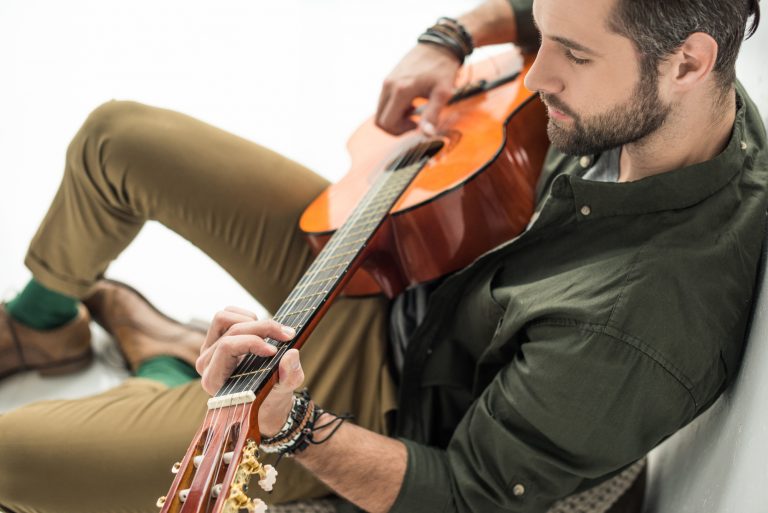
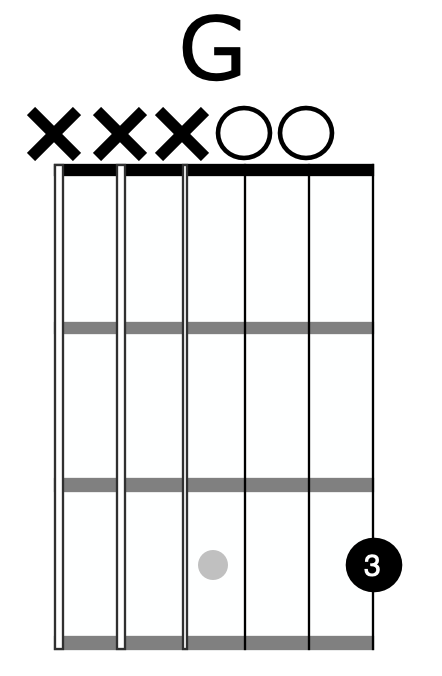
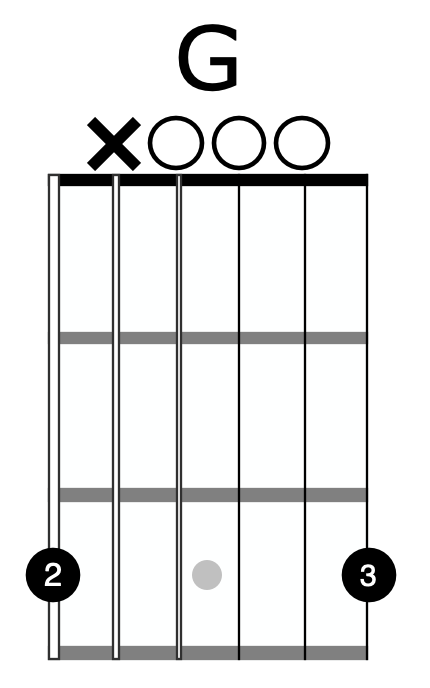
When playing this shape use the underneath of finger two to lightly touch the A string (5th string) to mute it so it cannot be heard. Another common way to play this shape is to use fingers three and four instead of fingers two and three which results in this shape:
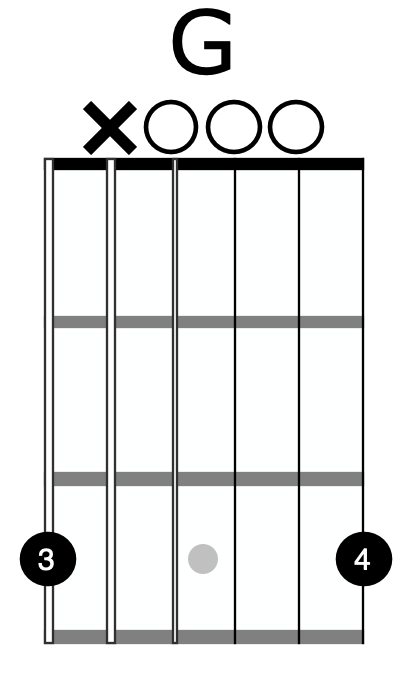
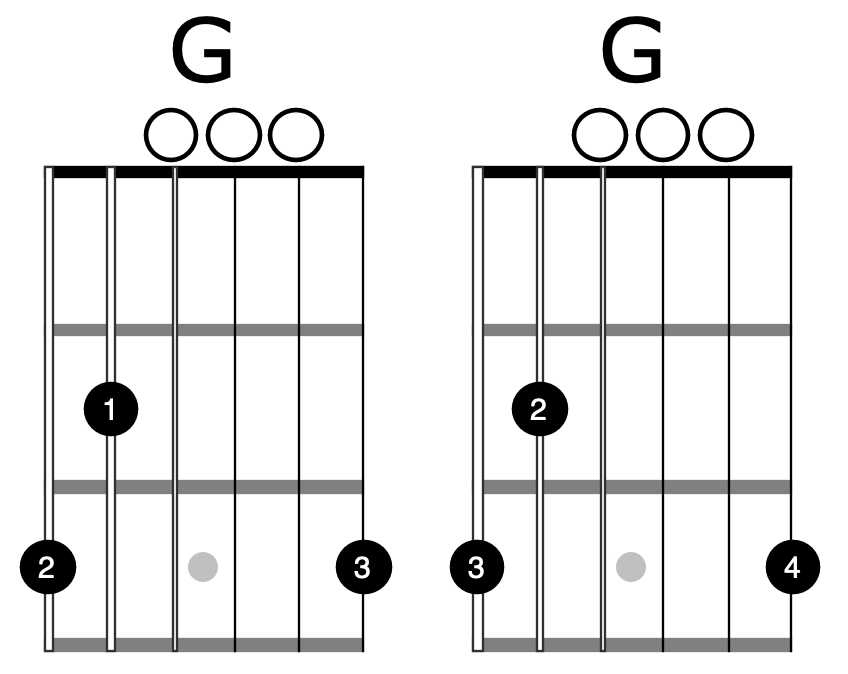
This shape is normally the first type of G chord beginners try to play followed by the more common four finger shape. To play the four finger G we move third finger onto the B string and put finger four on the high e string, fret three.
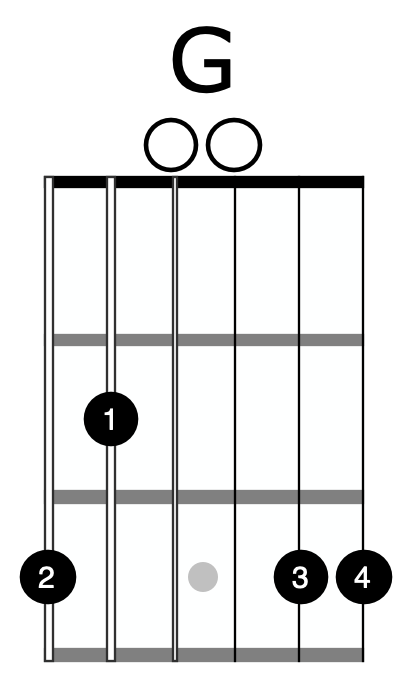
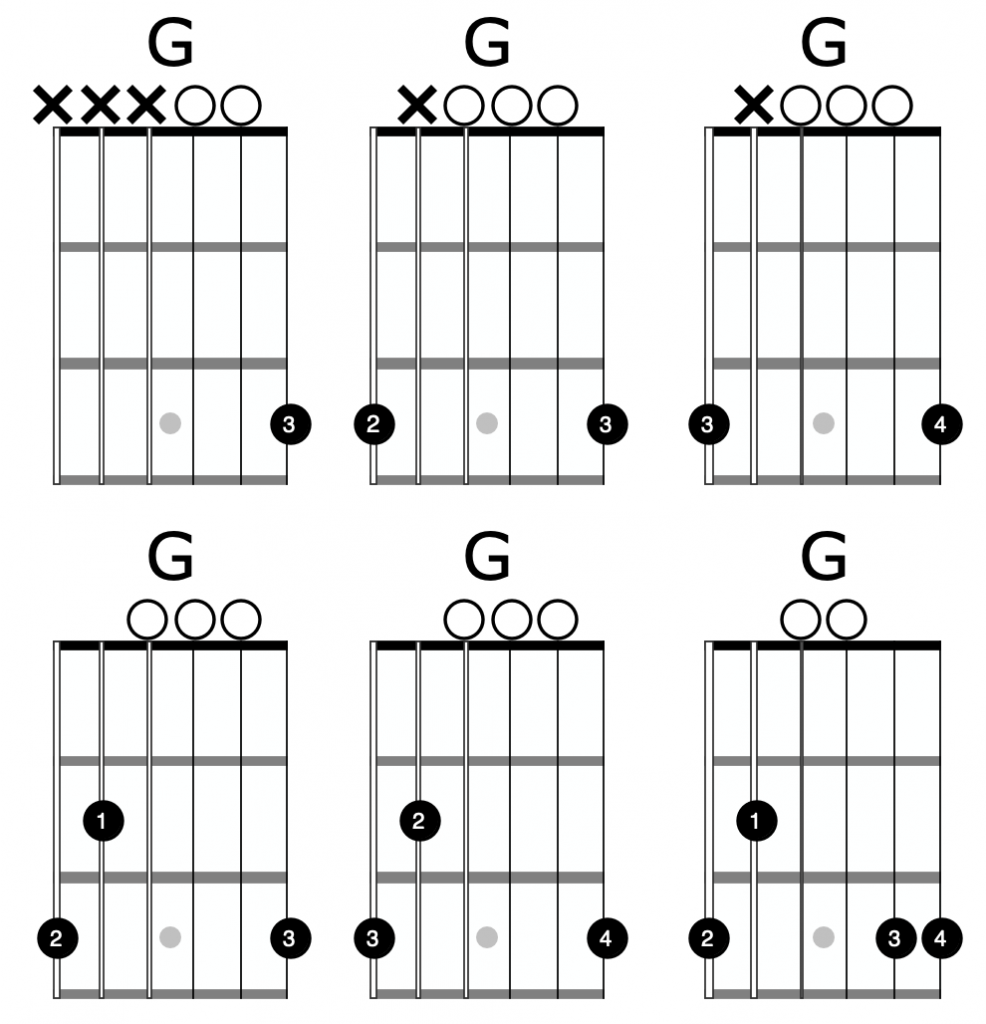
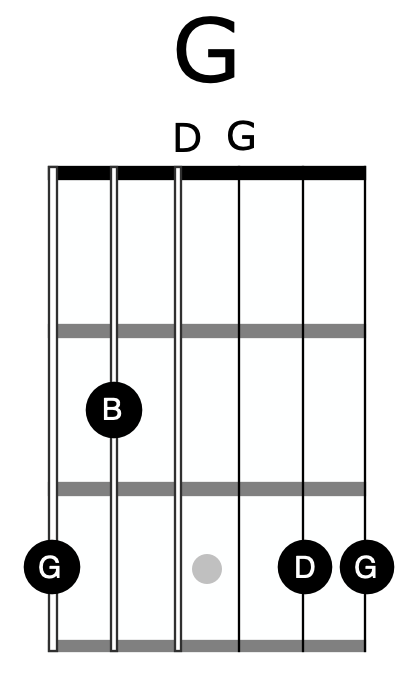
The interesting thing about playing a chord is it only has three notes, yet the guitar has six strings. Therefore, when playing a chord we have to double or even triple some of the notes.
If we take a closer look at our three finger shape from earlier you see we have three G notes, one D note and two B notes.
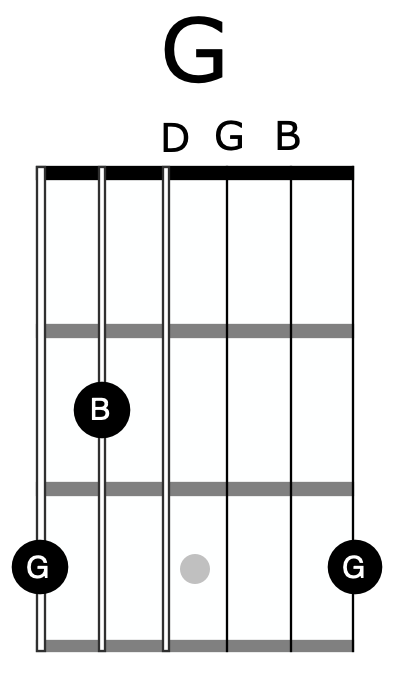
Below is the shape and as you can see it is based on the four finger G but you are not holding down the A string and instead muting it, this removes the 3rd (B) from the chord making it a G5 chord instead of a G Major chord.

